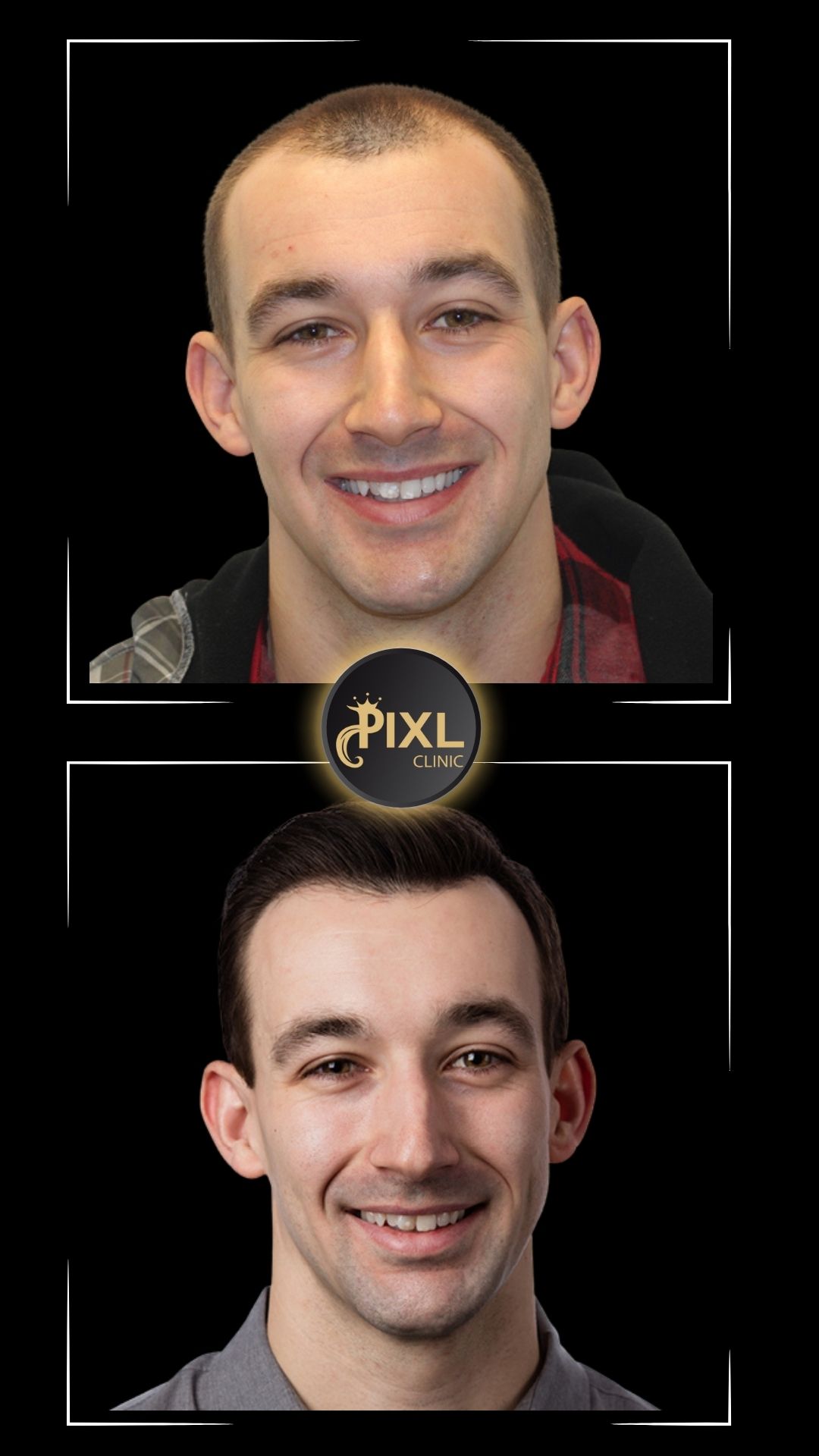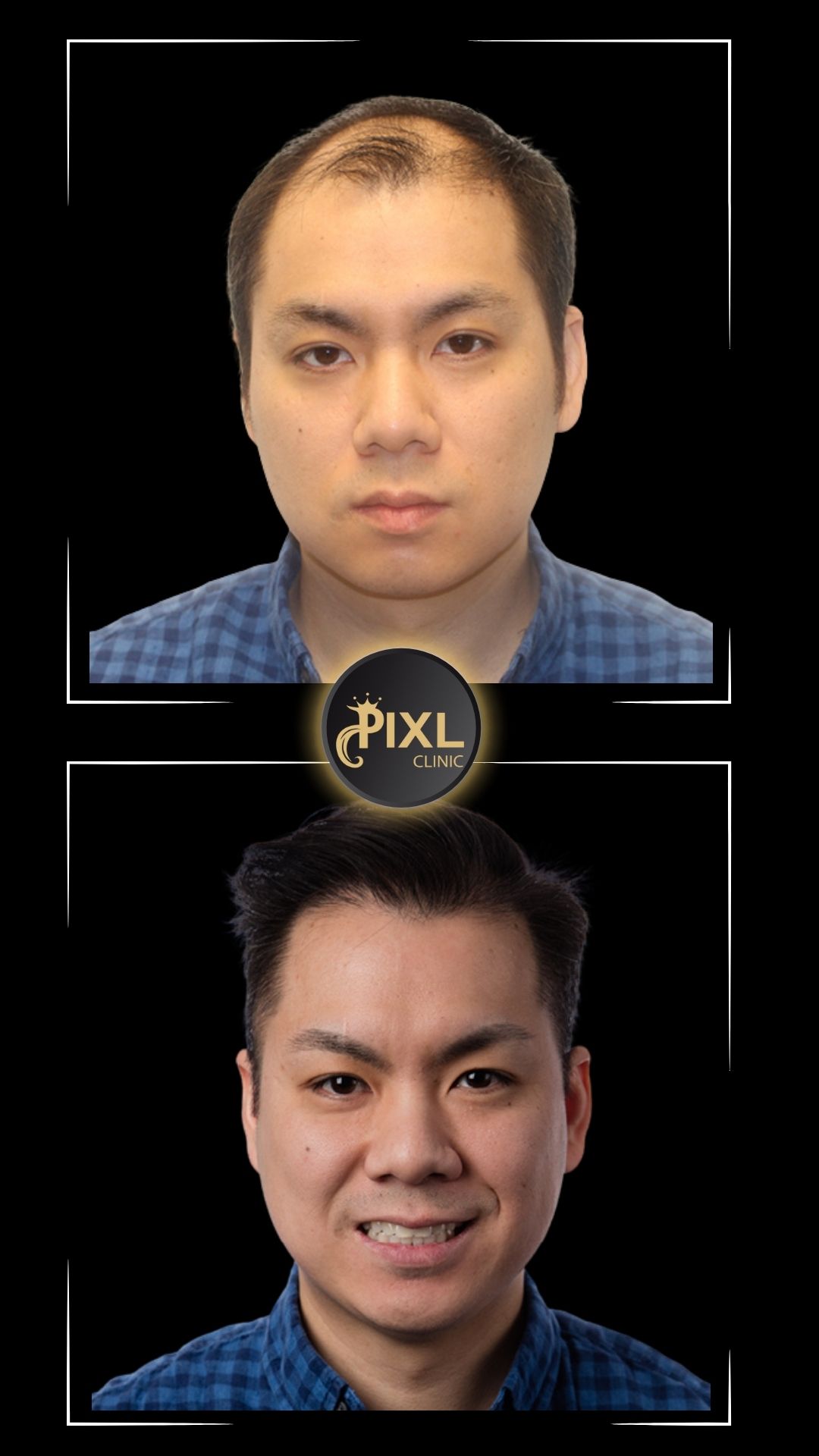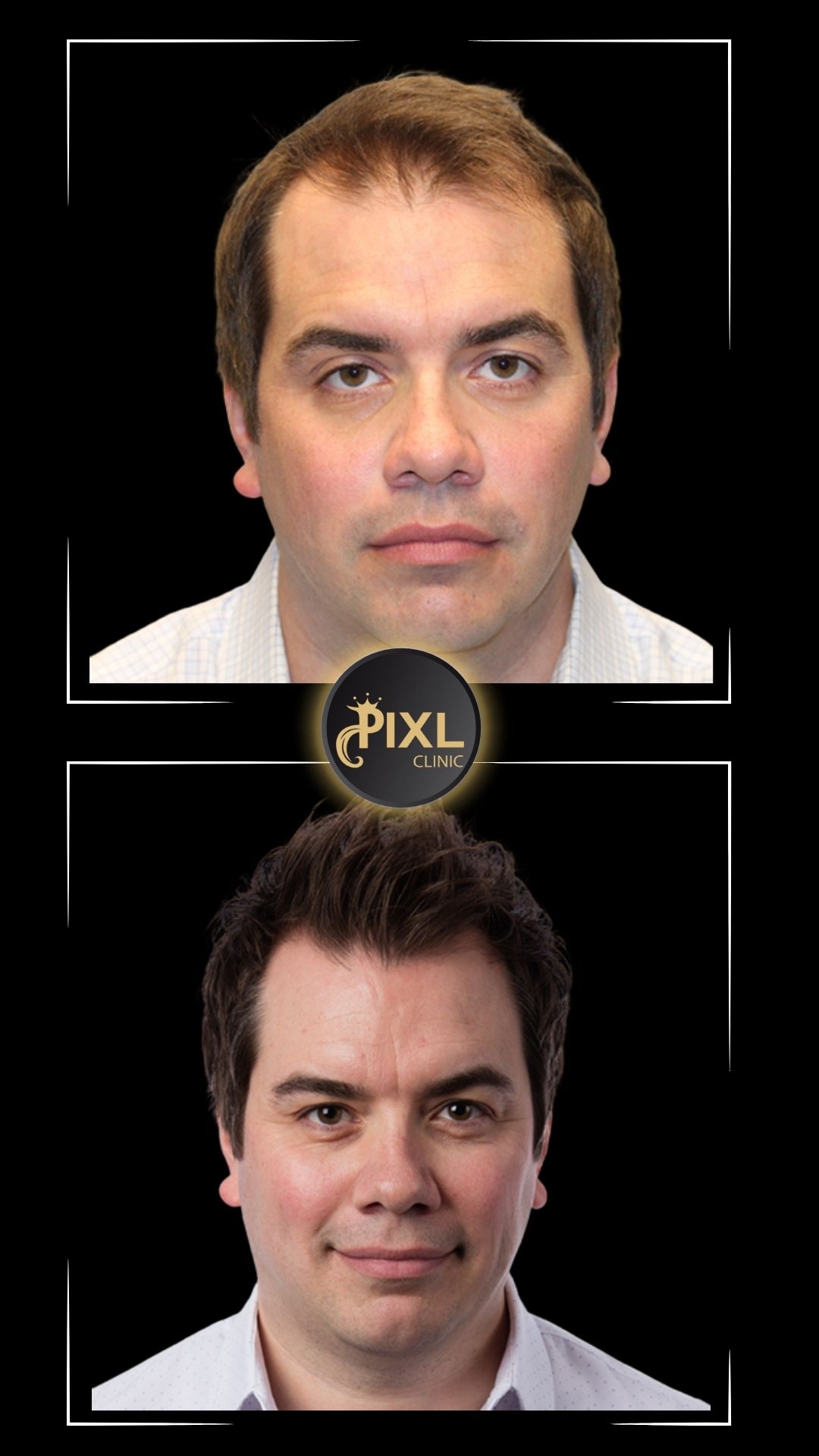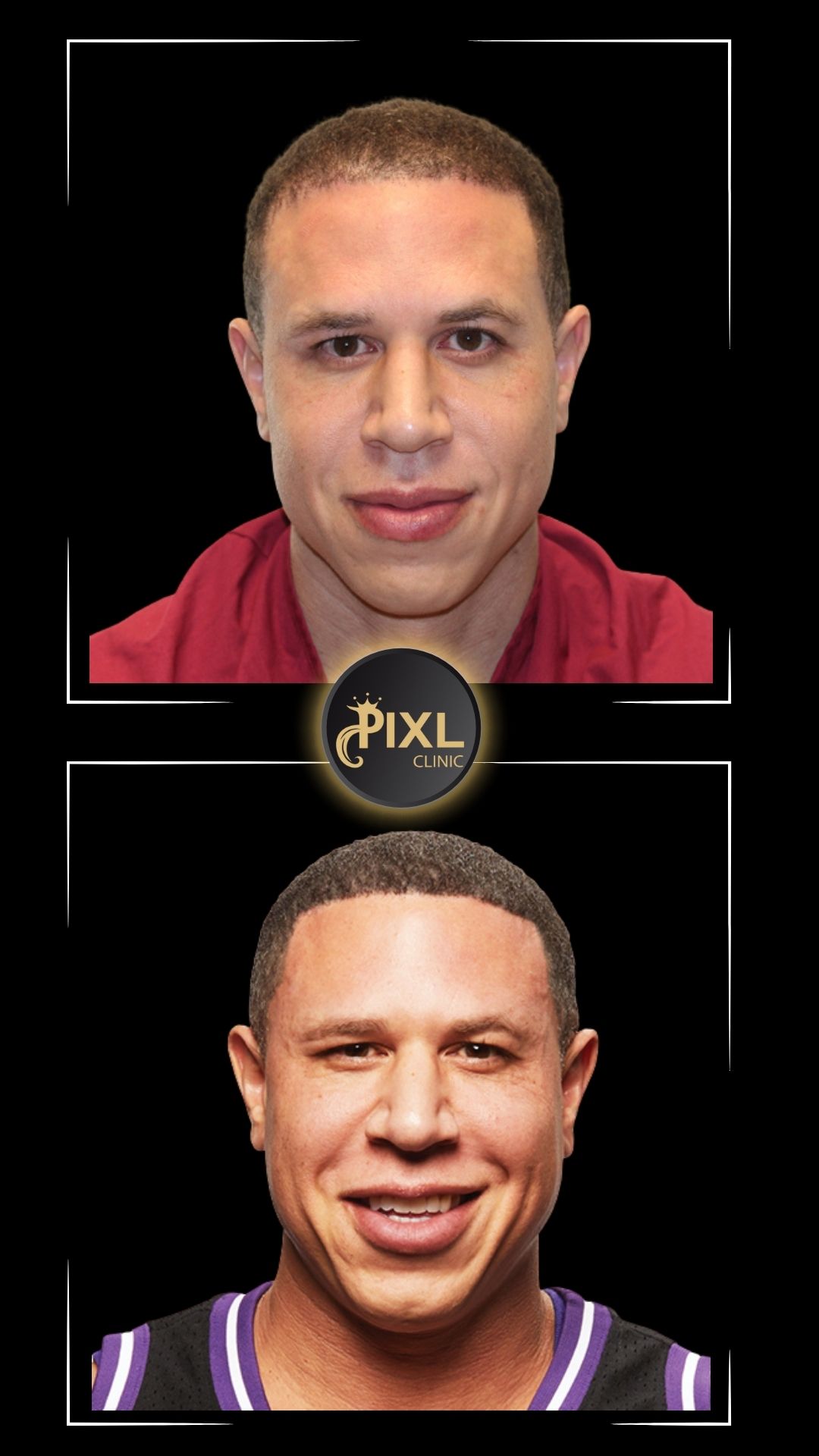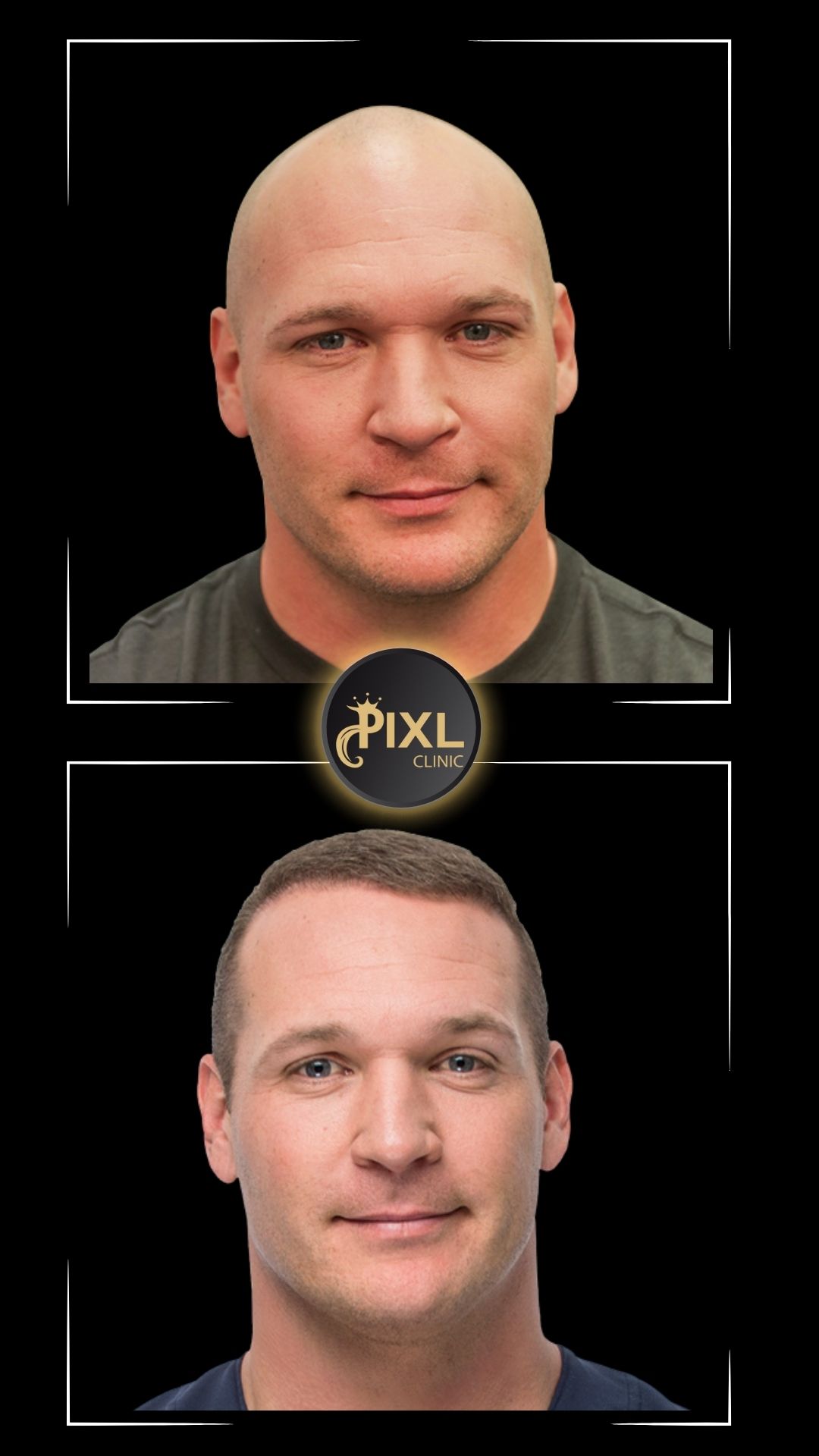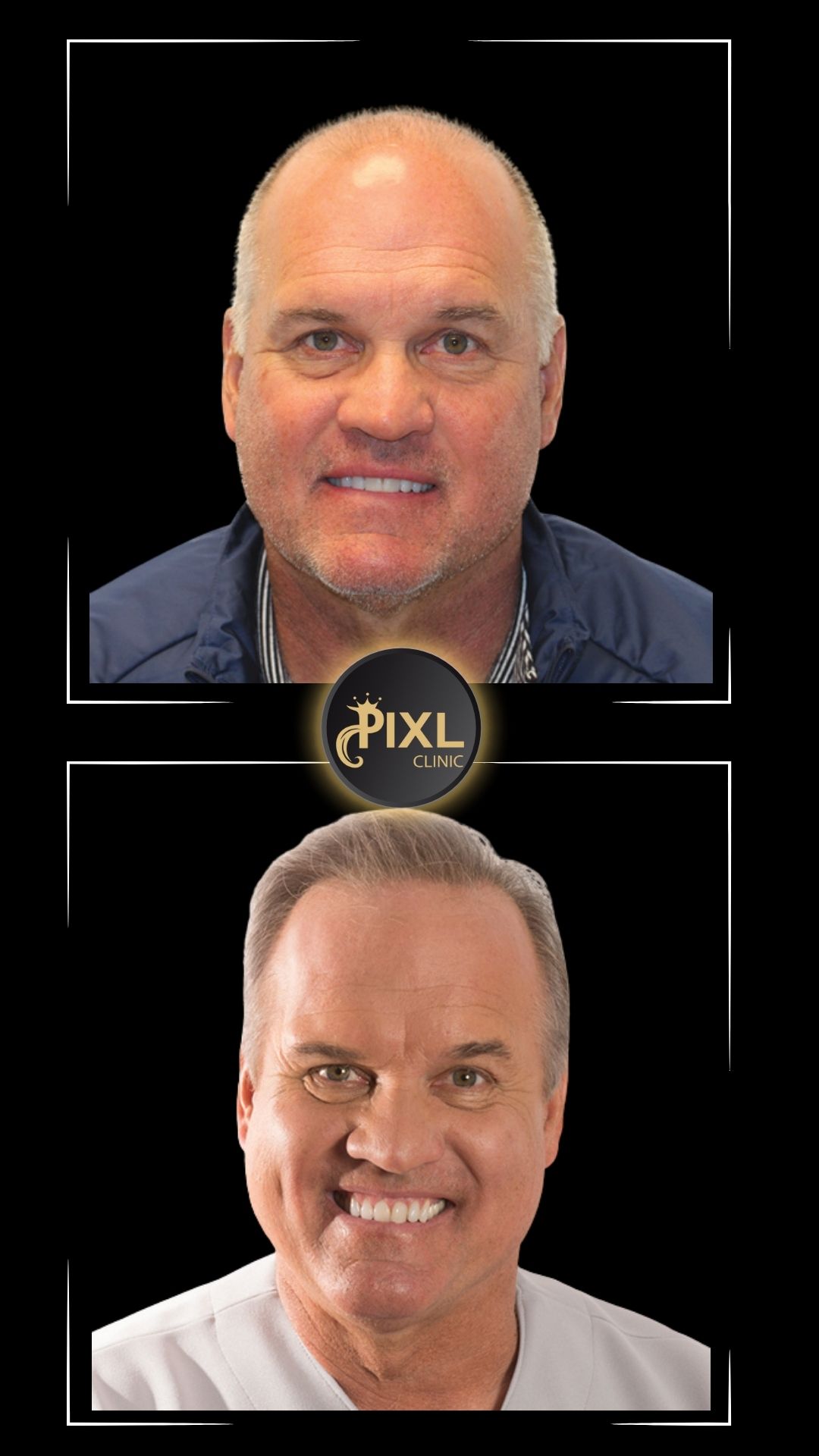Hair Transplant for Norwood Scale 6: Transforming Advanced Hair Loss
Hair loss can be a challenging experience, particularly for those who reach Norwood Scale 6. At this stage, hair loss is significant, with a receded hairline, complete balding at the crown, and only a horseshoe-shaped band of hair remaining at the sides and back of the scalp. While this level of hair loss may seem daunting, modern hair transplant techniques can provide remarkable results.
What is Norwood Scale 6?
The Norwood Scale is a classification system used to measure the severity of male pattern baldness. At Norwood Scale 6:
- The hairline has receded significantly, extending toward the top of the scalp.
- The crown is completely bald, leaving a large bald area.
- A thin band of hair remains at the back and sides (the donor area).
This stage represents advanced hair loss, requiring careful planning and expert surgical techniques for effective restoration.

Is a Hair Transplant Possible at Norwood Scale 6?
Yes, a hair transplant is possible for Norwood Scale 6. However, achieving optimal results depends on several factors:
- Donor Area Quality: The density and health of hair in the donor area.
- Scalp Laxity: The elasticity of the scalp, which impacts graft extraction.
- Patient Expectations: Managing realistic goals for coverage and density.
- Surgeon Expertise: Skill and experience are crucial for maximizing graft efficiency.
While full coverage might not always be achievable, a skilled surgeon can create a balanced and aesthetically pleasing result by focusing on key areas.
Techniques Used for Norwood Scale 6 Hair Transplants
FUT (Follicular Unit Transplantation):
- A strip of scalp is removed from the donor area, and individual hair follicles are extracted for transplantation.
- This technique is ideal for harvesting a large number of grafts (up to 4,000–5,000 grafts in one session).
FUE (Follicular Unit Extraction):
- Individual follicles are harvested directly from the donor area using a micro-punch tool.
- Leaves minimal scarring and allows for faster recovery.
Combined FUT + FUE:
- For Norwood 6 cases, combining both techniques can maximize the number of grafts harvested, achieving better coverage.
Body Hair Transplant (BHT):
- Hair from the chest, beard, or other parts of the body can supplement scalp donor hair if necessary.
How Many Grafts Are Needed?
To achieve satisfactory coverage for Norwood Scale 6, 4,000–6,000 grafts may be required. The number of grafts depends on:
- The size of the bald area.
- The density of the donor hair.
- The desired density in the transplanted area.
Surgeons typically prioritize the frontal hairline and mid-scalp for the most natural and impactful results. The crown may receive lower density to conserve grafts.
What to Expect During the Procedure
Consultation and Planning:
- A detailed analysis of the scalp and donor area.
- Designing a natural-looking hairline and distribution plan.
Surgery Day:
- Local anesthesia ensures a pain-free procedure.
- Grafts are harvested from the donor area and transplanted to the balding areas.
- The procedure takes 6–10 hours, depending on the number of grafts.
Recovery Phase:
- Mild swelling and redness in the scalp for a few days.
- Transplanted hair will shed within 2–8 weeks (a normal process called “shock loss”).
- New hair growth begins in 3–6 months, with full results in 12–18 months.
Results and Expectations
For Norwood Scale 6, results focus on creating the appearance of fuller hair, especially in the hairline and mid-scalp. Complete density may not be feasible, but the right approach can deliver:
- A youthful and natural hairline.
- Balanced coverage that improves overall appearance.
- Enhanced confidence and self-esteem.
Key Considerations for Norwood 6 Patients
Realistic Expectations:
- Full restoration of youthful density across the scalp may not be possible due to limited donor supply.
- Focus on achieving strategic coverage for a natural look.
Lifestyle Factors:
- Healthy habits, such as proper nutrition and scalp care, can support the longevity of the transplant.
Medication:
- Post-transplant medications like finasteride and minoxidil can help maintain existing hair and support new growth.
Surgeon Selection:
- Choose a surgeon with experience in advanced cases like Norwood Scale 6 for optimal results.
Success Stories: Norwood Scale 6 Transformations
Patients with Norwood Scale 6 often achieve life-changing results with a well-planned hair transplant. Many report looking years younger and feeling more confident in social and professional settings. While the journey requires patience, the outcome can be transformative.
A hair transplant for Norwood Scale 6 is a highly effective solution for restoring a youthful appearance and improving confidence. While challenges exist due to the extent of hair loss, modern techniques like FUT, FUE, or a combination of both make significant improvement possible. With the right surgeon and a clear understanding of the process, patients can achieve a natural-looking result that enhances their overall appearance.
Ready to take the next step? Consult with a qualified hair transplant specialist to explore your options and create a personalized treatment plan tailored to your needs.
FAQ: Hair Transplant for Norwood Scale 6
What is Norwood Scale 6?
Norwood Scale 6 represents an advanced stage of male pattern baldness where:
- The hairline has receded significantly.
- The crown is completely bald.
- A band of hair remains on the back and sides of the scalp (the donor area).
Can a hair transplant work for Norwood Scale 6?
Yes, a hair transplant is possible for Norwood Scale 6. While full coverage might not be achievable, strategic placement of grafts can create a natural appearance with improved density in the most visible areas (hairline and mid-scalp).
How many grafts are needed for Norwood Scale 6?
Typically, 4,000–6,000 grafts are required for satisfactory results, depending on the size of the bald area and the quality of the donor hair.
What techniques are used for Norwood Scale 6 transplants?
- FUT (Follicular Unit Transplantation): Suitable for harvesting a large number of grafts in a single session.
- FUE (Follicular Unit Extraction): Ideal for minimal scarring and faster recovery.
- Combined FUT + FUE: Maximizes grafts for extensive baldness.
- Body Hair Transplant (BHT): Hair from the chest or beard can supplement scalp donor hair if needed.
What are the biggest challenges for Norwood Scale 6 hair transplants?
- Limited donor area: The available hair in the back and sides must be sufficient for coverage.
- Realistic density: Achieving full scalp density is often unrealistic, so prioritization of key areas is essential.
- Patient expectations: Managing expectations is critical for satisfaction with the results.
Is the procedure painful?
No, the procedure is performed under local anesthesia, ensuring a pain-free experience. Some mild discomfort may occur during recovery.
How long does the procedure take?
Depending on the number of grafts, the surgery may take 6–10 hours in a single session.
What is the recovery time?
- Most patients resume normal activities within 2–5 days.
- Minor redness and swelling may last for about a week.
- Full recovery of the donor and transplant areas takes 1–2 weeks.
Will all the transplanted hair grow back?
Yes, the transplanted hair will grow back. However, the initial shedding (shock loss) is normal, and new hair growth typically begins in 3–6 months, with full results visible in 12–18 months.
What areas are prioritized during the transplant?
The hairline and mid-scalp are usually prioritized for natural and impactful results. The crown may receive fewer grafts to conserve donor hair.
Can medication help after a transplant?
Yes, medications like finasteride and minoxidil can help maintain existing hair, improve growth, and reduce future hair loss.
What results can I expect?
- A natural-looking hairline and balanced coverage.
- Improved density in key areas.
- While full coverage may not be possible, the goal is a significant improvement in appearance.
Is a second transplant necessary?
In some cases, a second session may be required to enhance density or cover additional areas. This depends on the donor hair availability and patient goals.
How long do the results last?
The transplanted hair is permanent and resistant to hair loss. However, natural hair near the transplant site may continue to thin, so ongoing treatments may be recommended.
What are the risks of a transplant for Norwood Scale 6?
- Shock loss (temporary shedding).
- Uneven density if not performed by an experienced surgeon.
- Insufficient donor hair for full coverage in extreme cases.
How do I choose the right surgeon?
- Look for a surgeon with expertise in high-grade baldness transplants (Norwood 6–7).
- Review before-and-after photos of previous cases.
- Ensure the clinic uses advanced techniques and has a good reputation.
What if my donor area is weak?
For patients with limited donor hair, options include:
- Body Hair Transplant (BHT) from the beard, chest, or other areas.
- Lower-density transplants with strategic placement to improve appearance.
What is the cost of a hair transplant for Norwood Scale 6?
Costs vary depending on the clinic, surgeon, and number of grafts but typically range from $2,000–$4,000 or more.
When can I return to work?
Most patients can return to work within 2–5 days after the procedure, depending on their comfort level and type of work.
What should I consider before getting a transplant?
- Your goals and expectations.
- Quality of your donor area.
- Choosing an experienced surgeon.
- Commitment to post-surgical care and potential medications.

